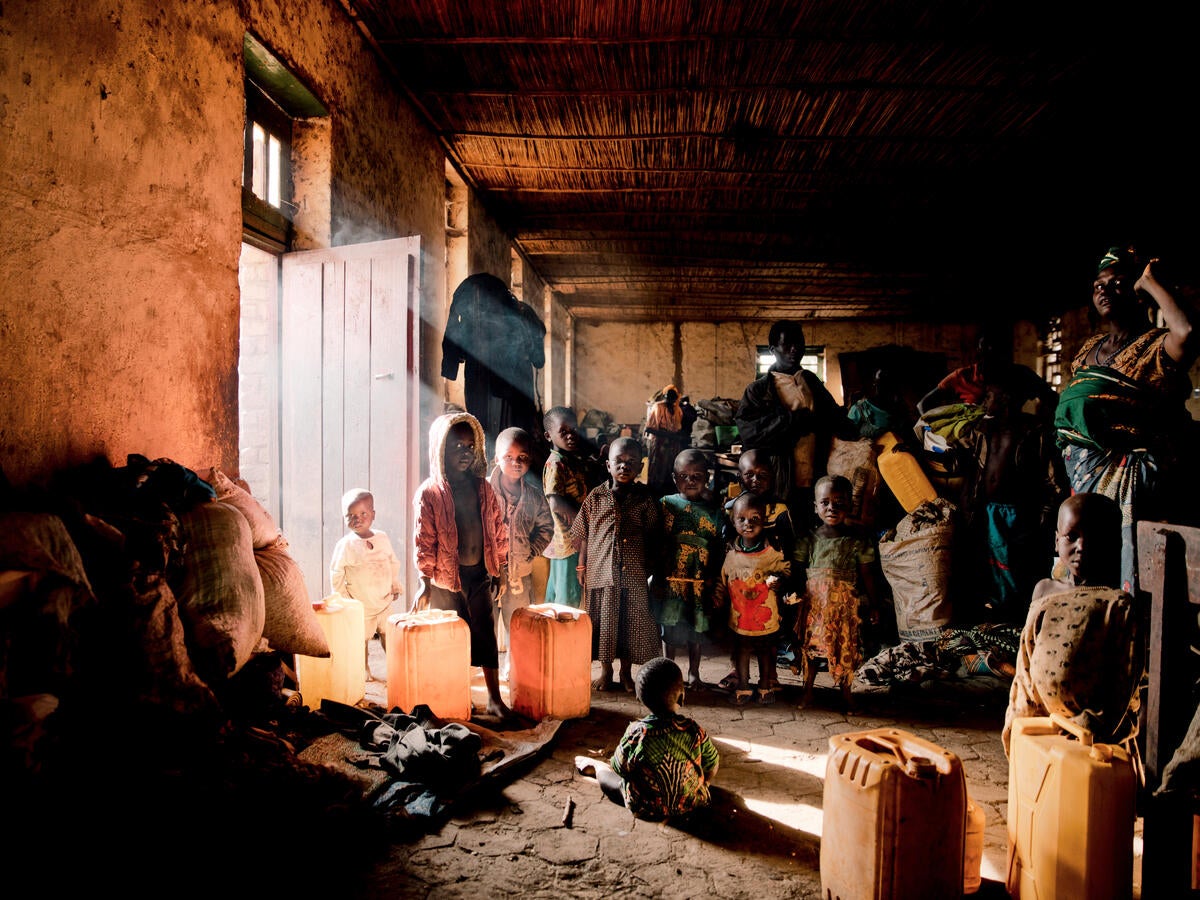Inner light: The children surviving war in the DRC
‘I want peace in all of Ituri. It is this peace which we look for, but which is never there’

Your support helps us to tell the story
From reproductive rights to climate change to Big Tech, The Independent is on the ground when the story is developing. Whether it's investigating the financials of Elon Musk's pro-Trump PAC or producing our latest documentary, 'The A Word', which shines a light on the American women fighting for reproductive rights, we know how important it is to parse out the facts from the messaging.
At such a critical moment in US history, we need reporters on the ground. Your donation allows us to keep sending journalists to speak to both sides of the story.
The Independent is trusted by Americans across the entire political spectrum. And unlike many other quality news outlets, we choose not to lock Americans out of our reporting and analysis with paywalls. We believe quality journalism should be available to everyone, paid for by those who can afford it.
Your support makes all the difference.The award-winning photographer Hugh Kinsella Cunningham travelled across war-torn Ituri province in the Democratic Republic of Congo with Save the Children to document the stories of children caught up in one of the longest-running conflicts in the world.
The series of powerful images tells the heart-breaking stories of children driven from their villages by attacks from armed groups and forced to flee for their lives. Children describe seeing their homes burnt to the ground, losing loved ones and watching their schools destroyed.
Through his portraits Cunningham aims to create a sense of hope, innocence and childhood with his poignant use of colour. Each subject is photographed without digital manipulation, instead using flowers and objects found in the camps carefully positioned in front of the lens.



The series comes as reports suggest that the UK government is due to cut aid to the DRC by 60%, which could have a devastating impact on children in the region. The move is part of widespread proposed cuts to nine other war zones, which are home to some 105 million of the world’s most vulnerable children.
Latest UN figures show that there are currently 5.2 million displaced people in the DRC, including 3 million children. That’s more than any other country outside Syria, and 50 per cent of these have been in the past 12 months.
Conflict has plagued the Democratic Republic of Congo for more than 20 years, creating one of the largest humanitarian crises in the world. This has put the health and protection of millions of children at risk. There are currently more than 4.6 million children across the country in need of humanitarian aid.



Ituri province in the east of the country has been the epicentre of the fighting in recent years, displacing over 1.6 million people, with families forced to flee their homes to seek sanctuary in internally displaced persons (IDP) camps with little food, shelter or hope for the future.
Emilie, 15, who took part in the project, fled her home with her family when armed groups attacked her village. She recalls seeing the men fire their weapons, kill and steal. Emilie was lucky and managed to escape, but finds life hard living in the camps.
When asked about her experiences, Emilie says: “We fled the attacks of the assailants. On the road I saw attackers kill, cut throats, shoot weapons and steal clothes… We slept in the forest and they also chased us here.”



She says life in the camps is hard, with “little food to go around”, and she often goes hungry. Emilie still dreams of one day returning and fulfilling her ambition to be a teacher.
Thirteen-year-old Christian lost his mother in the chaos as they fled when armed groups attacked his village. He had agreed to meet her in a nearby village if they became separated, but she never arrived. He now lives with his grandmother in an IDP camp.
When asked about his experience Christian says: “My mother told us we will meet her in a different village, and my grandmother told her if war comes, then we will flee.


“But when we left, we got to the village and didn’t find my mum there: she had already left for Uganda. Our life here is difficult. I started a job selling food; I am the one supporting the whole family.”
Save the Children’s country director in the DRC, Amavi Akpamagbo, said: “These images show the immense strength and resilience of children growing up in one of the most hostile environments on earth.
“Children living in Ituri have known nothing but war, witnessing unspeakable acts of violence on an almost daily basis. Losing friends and loved ones, seeing their homes burnt to the ground or their schools looted and closed.


“Each of these stories is a casualty of warring parties having complete disregard for international norms and standards, and governments who turned a blind eye when children’s fundamental rights were violated.
“We can’t change the past for these children, but we can help them build a better future. We call on all parties to alleviate children suffering in a crisis that had been ongoing for too long.”
All the names have been changed
Our country is about to host a meeting that could change the world. The decisions made at June’s G7 meeting will affect us all - but especially children. That’s why Save the Children is part of the Crack the Crises campaign, to tackle the biggest crises facing children across the world. Join the campaign here
Join our commenting forum
Join thought-provoking conversations, follow other Independent readers and see their replies
Comments